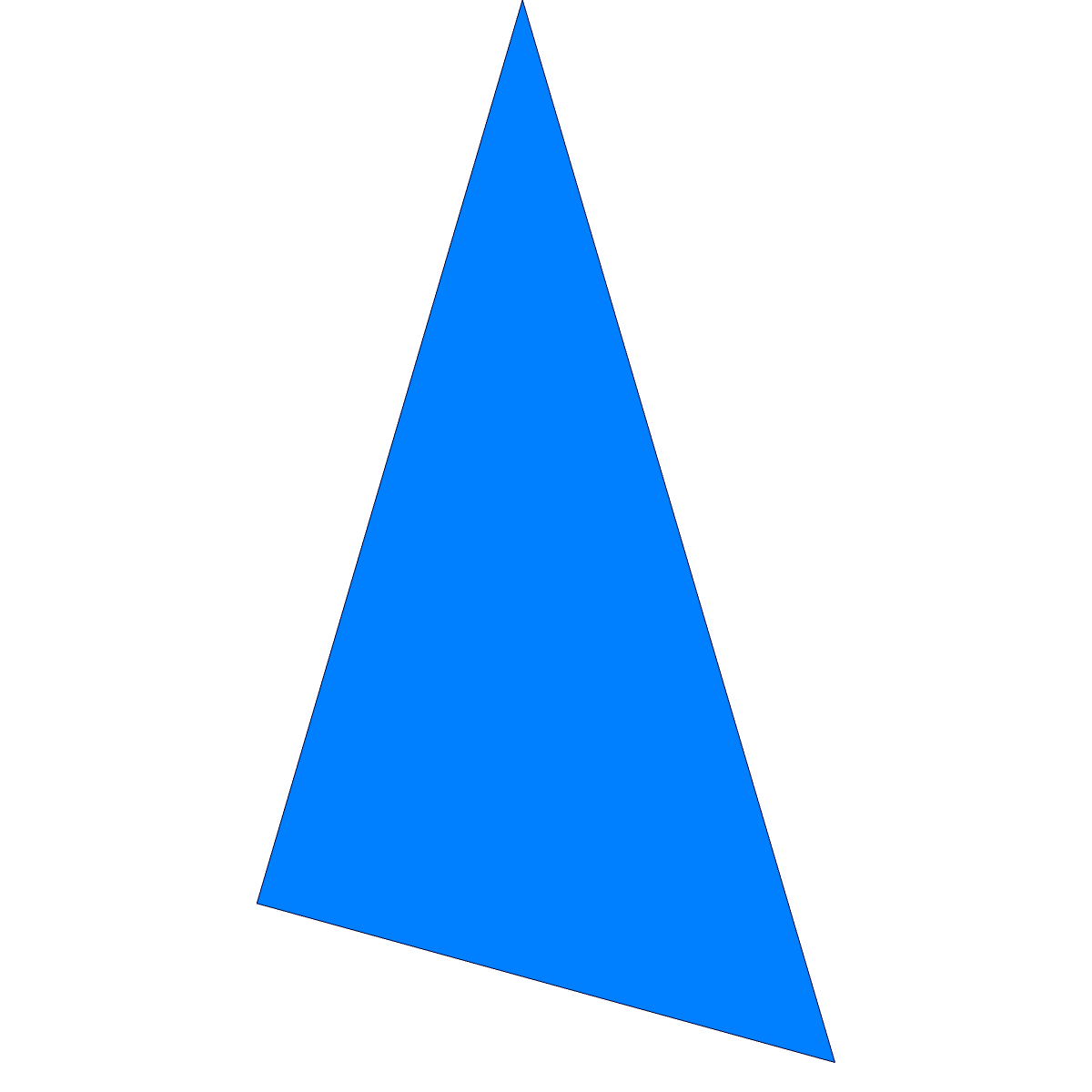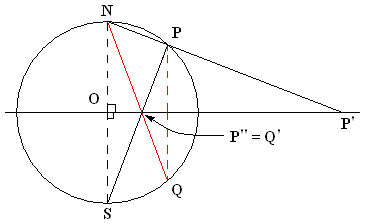|
Compound Of Five Octahedra
The compound of five octahedra is one of the five regular polyhedron compounds, and can also be seen as a stellation. It was first described by Edmund Hess in 1876. It is unique among the regular compounds for not having a regular convex hull. As a stellation It is the second stellation of the icosahedron, and given as List of Wenninger polyhedron models#Stellations of icosahedron, Wenninger model index 23. It can be constructed by a rhombic triacontahedron with rhombic-based Pyramid (geometry), pyramids added to all the faces, as shown by the five colored model image. (This construction does not generate the ''regular'' compound of five octahedra, but shares the same topology and can be smoothly deformed into the regular compound.) It has a density of greater than 1. As a compound It can also be seen as a polyhedral compound of five Octahedron, octahedra arranged in icosahedral symmetry (Ih). The spherical polyhedron, spherical and stereographic projection, stereograph ... [...More Info...] [...Related Items...] OR: [Wikipedia] [Google] [Baidu] |
Rhombic Triacontahedron
The rhombic triacontahedron, sometimes simply called the triacontahedron as it is the most common thirty-faced polyhedron, is a convex polyhedron with 30 rhombus, rhombic face (geometry), faces. It has 60 edge (geometry), edges and 32 vertex (geometry), vertices of two types. It is a Catalan solid, and the dual polyhedron of the icosidodecahedron. It is a zonohedron and can be seen as a elongated rhombic icosahedron. The ratio of the long diagonal to the short diagonal of each face is exactly equal to the golden ratio, , so that the Angle#Types of angles, acute angles on each face measure , or approximately 63.43°. A rhombus so obtained is called a ''golden rhombus''. Being the dual of an Archimedean solid, the rhombic triacontahedron is ''face-transitive'', meaning the symmetry group of the solid acts transitive action, transitively on the set of faces. This means that for any two faces, and , there is a rotation or reflection (mathematics), reflection of the solid that ... [...More Info...] [...Related Items...] OR: [Wikipedia] [Google] [Baidu] |
Disdyakis Triacontahedron
In geometry, a disdyakis triacontahedron, hexakis icosahedron, decakis dodecahedron, kisrhombic triacontahedron or d120 is a Catalan solid with 120 faces and the dual to the Archimedean solid, Archimedean truncated icosidodecahedron. As such it is Isohedral figure, face-uniform but with Regular polygon, irregular face polygons. It slightly resembles an inflated rhombic triacontahedron: if one replaces each face of the rhombic triacontahedron with a single Vertex (geometry), vertex and four triangles in a regular fashion, one ends up with a disdyakis triacontahedron. That is, the disdyakis triacontahedron is the Kleetope of the rhombic triacontahedron. It is also the barycentric subdivision of the regular dodecahedron and icosahedron. It has the most faces among the Archimedean and Catalan solids, with the snub dodecahedron, with 92 faces, in second place. If the bipyramids, the gyroelongated bipyramids, and the trapezohedra are excluded, the disdyakis triacontahedron has the most ... [...More Info...] [...Related Items...] OR: [Wikipedia] [Google] [Baidu] |
Stereographic Projection
In mathematics, a stereographic projection is a perspective transform, perspective projection of the sphere, through a specific point (geometry), point on the sphere (the ''pole'' or ''center of projection''), onto a plane (geometry), plane (the ''projection plane'') perpendicular to the diameter through the point. It is a smooth function, smooth, bijection, bijective function (mathematics), function from the entire sphere except the center of projection to the entire plane. It maps circle of a sphere, circles on the sphere to generalised circle, circles or lines on the plane, and is conformal map, conformal, meaning that it preserves angles at which curves meet and thus Local property, locally approximately preserves similarity (geometry), shapes. It is neither isometry, isometric (distance preserving) nor Equiareal map, equiareal (area preserving). The stereographic projection gives a way to representation (mathematics), represent a sphere by a plane. The metric tensor, metric ... [...More Info...] [...Related Items...] OR: [Wikipedia] [Google] [Baidu] |
Spherical Polyhedron
In geometry, a spherical polyhedron or spherical tiling is a tessellation, tiling of the sphere in which the surface is divided or partitioned by great arcs into bounded regions called ''spherical polygons''. A polyhedron whose vertices are equidistant from its center can be conveniently studied by projecting its edges onto the sphere to obtain a corresponding spherical polyhedron. The most familiar spherical polyhedron is the Ball (association football), soccer ball, thought of as a spherical truncated icosahedron. The next most popular spherical polyhedron is the beach ball, thought of as a hosohedron. Some #Improper_cases, "improper" polyhedra, such as hosohedron, hosohedra and their dual polyhedron, duals, dihedron, dihedra, exist as spherical polyhedra, but their flat-faced analogs are Degeneracy (mathematics), degenerate. The example hexagonal beach ball, is a hosohedron, and is its dual dihedron. History During the 10th Century, the Islamic scholar Abū al-Wafā' Būz ... [...More Info...] [...Related Items...] OR: [Wikipedia] [Google] [Baidu] |
Icosahedral Symmetry
In mathematics, and especially in geometry, an object has icosahedral symmetry if it has the same symmetries as a regular icosahedron. Examples of other polyhedra with icosahedral symmetry include the regular dodecahedron (the dual polyhedron, dual of the icosahedron) and the rhombic triacontahedron. Every polyhedron with icosahedral symmetry has 60 Rotational symmetry, rotational (or orientation-preserving) symmetries and 60 orientation-reversing symmetries (that combine a rotation and a Reflection symmetry, reflection), for a total symmetry order of 120. The full symmetry group is the Coxeter group of type . It may be represented by Coxeter notation and Coxeter diagram . The set of rotational symmetries forms a subgroup that is isomorphic to the alternating group on 5 letters. As point group Apart from the two infinite series of prismatic and antiprismatic symmetry, rotational icosahedral symmetry or chiral icosahedral symmetry of chiral objects and full icosahedra ... [...More Info...] [...Related Items...] OR: [Wikipedia] [Google] [Baidu] |
Polyhedral Compound
In geometry, a polyhedral compound is a figure that is composed of several polyhedra sharing a common Centroid, centre. They are the three-dimensional analogs of star polygon#Regular compounds, polygonal compounds such as the hexagram. The outer Vertex (geometry), vertices of a compound can be connected to form a convex polyhedron called its convex hull. A compound is a faceting of its convex hull. Another convex polyhedron is formed by the small central space common to all members of the compound. This polyhedron can be used as the core for a set of stellations. Regular compounds A regular polyhedral compound can be defined as a compound which, like a regular polyhedron, is vertex-transitive, edge-transitive, and face-transitive. Unlike the case of polyhedra, this is not equivalent to the symmetry group acting transitively on its flag (geometry), flags; the compound of two tetrahedra is the only regular compound with that property. There are five regular compounds of polyhe ... [...More Info...] [...Related Items...] OR: [Wikipedia] [Google] [Baidu] |
Icosidodecahedron
In geometry, an icosidodecahedron or pentagonal gyrobirotunda is a polyhedron with twenty (''icosi-'') triangular faces and twelve (''dodeca-'') pentagonal faces. An icosidodecahedron has 30 identical Vertex (geometry), vertices, with two triangles and two pentagons meeting at each, and 60 identical edges, each separating a triangle from a pentagon. As such, it is one of the Archimedean solids and more particularly, a quasiregular polyhedron. Construction One way to construct the icosidodecahedron is to start with two pentagonal rotunda by attaching them to their bases. These rotundas cover their decagonal base so that the resulting polyhedron has 32 faces, 30 vertices, and 60 edges. This construction is similar to one of the Johnson solids, the pentagonal orthobirotunda. The difference is that the icosidodecahedron is constructed by twisting its rotundas by 36°, a process known as gyration, resulting in the pentagonal face connecting to the triangular one. The icosidodecahedr ... [...More Info...] [...Related Items...] OR: [Wikipedia] [Google] [Baidu] |
Stellations Of Icosahedron
''The Fifty-Nine Icosahedra'' is a book written and illustrated by Harold Scott MacDonald Coxeter, H. S. M. Coxeter, Patrick du Val, P. Du Val, H. T. Flather and J. F. Petrie. It enumerates certain stellations of the regular convex or Platonic regular icosahedron, icosahedron, according to a set of rules put forward by J. C. P. Miller. First published by the University of Toronto in 1938, a Second Edition reprint by Springer-Verlag followed in 1982. Tarquin's 1999 Third Edition included new reference material and photographs by K. and D. Crennell. Authors' contributions Miller's rules Although J. C. P. Miller, Miller did not contribute to the book directly, he was a close colleague of Coxeter and Petrie. His contribution is immortalised in his set of rules for defining which stellation forms should be considered "properly significant and distinct": :''(i) The faces must lie in twenty planes, viz., the bounding planes of the regular icosahedron.'' :''(ii) All parts composing t ... [...More Info...] [...Related Items...] OR: [Wikipedia] [Google] [Baidu] |
Icosahedron
In geometry, an icosahedron ( or ) is a polyhedron with 20 faces. The name comes . The plural can be either "icosahedra" () or "icosahedrons". There are infinitely many non- similar shapes of icosahedra, some of them being more symmetrical than others. The best known is the ( convex, non- stellated) regular icosahedron—one of the Platonic solids—whose faces are 20 equilateral triangles. Regular icosahedra There are two objects, one convex and one nonconvex, that can both be called regular icosahedra. Each has 30 edges and 20 equilateral triangle faces with five meeting at each of its twelve vertices. Both have icosahedral symmetry. The term "regular icosahedron" generally refers to the convex variety, while the nonconvex form is called a ''great icosahedron''. Convex regular icosahedron The convex regular icosahedron is usually referred to simply as the ''regular icosahedron'', one of the five regular Platonic solids, and is represented by its Schläfli symbol , contai ... [...More Info...] [...Related Items...] OR: [Wikipedia] [Google] [Baidu] |
Compound Of Five Octahedra Stellation Facets
Compound may refer to: Architecture and built environments * Compound (enclosure), a cluster of buildings having a shared purpose, usually inside a fence or wall ** Compound (fortification), a version of the above fortified with defensive structures * Compound (migrant labour), a hostel for migrant workers such as those historically connected with mines in South Africa * The Compound, an area of Palm Bay, Florida, US * Komboni or compound, a type of slum in Zambia Government and law * Composition (fine), a legal procedure in use after the English Civil War ** Committee for Compounding with Delinquents, an English Civil War institution that allowed Parliament to compound the estates of Royalists * Compounding treason, an offence under the common law of England * Compounding a felony, a previous offense under the common law of England Linguistics * Compound (linguistics), a word that consists of more than one radical element * Compound sentence (linguistics), a type of sent ... [...More Info...] [...Related Items...] OR: [Wikipedia] [Google] [Baidu] |
Convex Hull
In geometry, the convex hull, convex envelope or convex closure of a shape is the smallest convex set that contains it. The convex hull may be defined either as the intersection of all convex sets containing a given subset of a Euclidean space, or equivalently as the set of all convex combinations of points in the subset. For a Bounded set, bounded subset of the plane, the convex hull may be visualized as the shape enclosed by a rubber band stretched around the subset. Convex hulls of open sets are open, and convex hulls of compact sets are compact. Every compact convex set is the convex hull of its extreme points. The convex hull operator is an example of a closure operator, and every antimatroid can be represented by applying this closure operator to finite sets of points. The algorithmic problems of finding the convex hull of a finite set of points in the plane or other low-dimensional Euclidean spaces, and its projective duality, dual problem of intersecting Half-space (geome ... [...More Info...] [...Related Items...] OR: [Wikipedia] [Google] [Baidu] |





